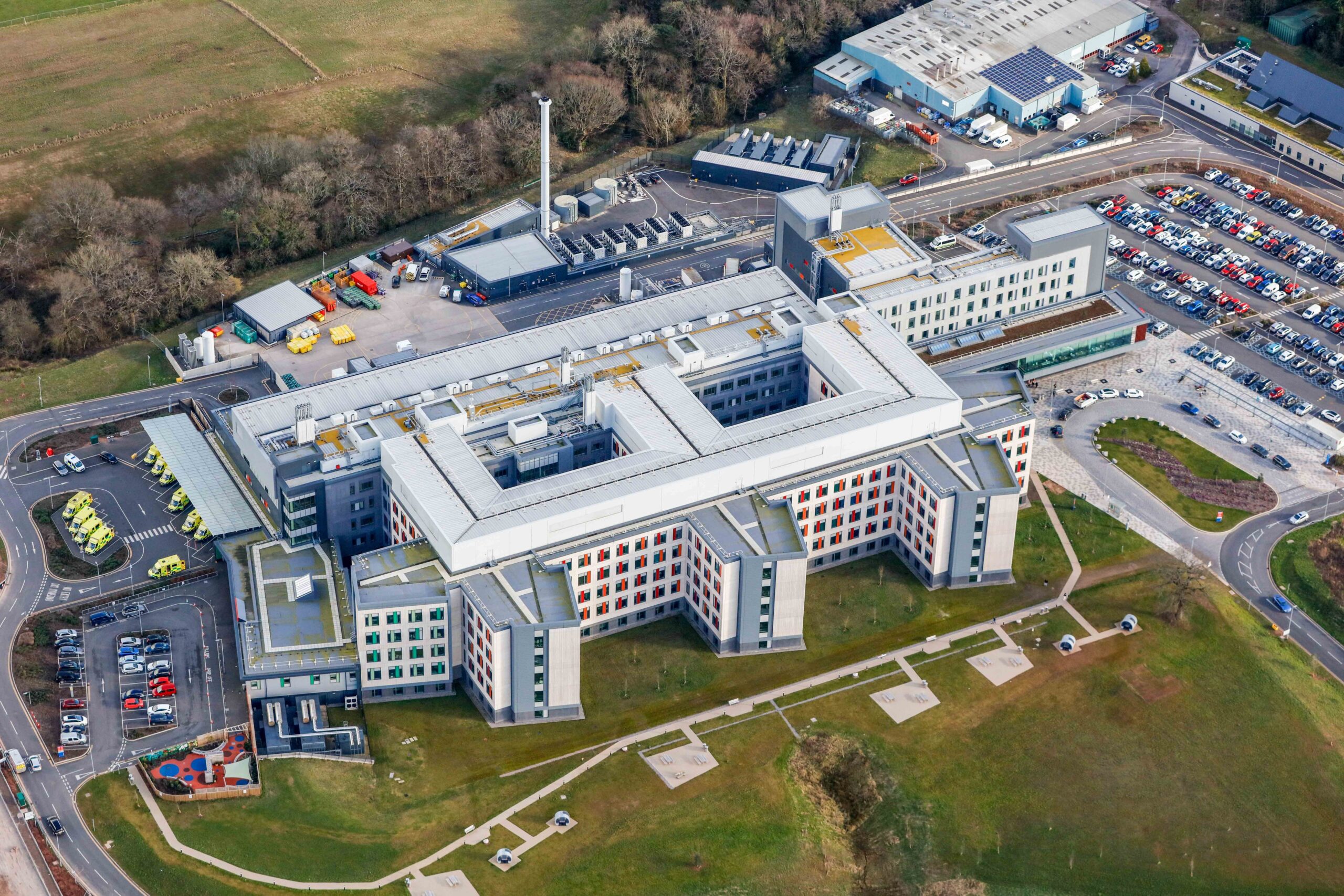Older people normally facing a long spell in hospital after fracturing a bone can now leave hospital much earlier, as targeted support is offered to them in their own homes.
The Fracture Discharge Service is delivered by multidisciplinary teams from the virtual wards, Older Persons Assessment Service (OPAS), Trauma and Orthopaedics and the Early Supported Discharge (ESD) who work together.

Pictured: Members of the Fracture Discharge Service (full caption at end).
The introduction of the Fracture Discharge Service has saved more than 1,800 hospital bed days to date.
This has translated to 381 patients either having their hospital stay reduced or avoided completely.
Patients with certain fractures are identified on arrival at the hospital and advised to return home the same day, with support at home arranged instead.
Sarah Beynon, Cwmtawe Local Cluster Collaborative’s virtual ward clinical manager, said: “Initially we started looking at the cohort of patients we could support upon discharge. These were patients who had sustained a fragility fracture, such as a fractured humerus or other fractures.
“We also looked to identify patients admitted to hospital following a fractured neck of femur that may be suitable to be discharged earlier through the Fracture Discharge Service pathway.
“We can support these patients and provide wraparound care with the virtual ward team once they have been discharged.
“Within the virtual ward, we will explore pain management, identify any occupational therapy or physiotherapy needs and assess the patient holistically for any further needs.
“The ESD team works under the umbrella of the virtual ward with the Fracture Discharge Service pathway and provides therapy led rehabilitation to patients, who may receive up to three calls a day from the team.
“Our virtual ward in-reach team identify patients admitted to hospital and those who have been assessed in the Emergency Department who would be suitable to be referred to the virtual ward, via the Fracture Discharge Service.”
Once the virtual ward has received the referral and it has been triaged, the relevant staff members are contacted based on the patient’s ongoing care and rehabilitation needs.
They then arrange to visit the patient at home to assess them and how they are managing with their fracture.
Being out of hospital also reduces their risk of catching infections and deconditioning – losing fitness and muscle mass through inactivity.
The service also helps to free up beds for other patients coming into hospital.
Alex Gigg, clinical lead occupational therapist who oversees the virtual wards’ occupational therapy team, said: “There may be some occupational therapy needs that are identified once we have seen the patient.
“For example, if a patient has a fractured humerus, they may struggle with making food, washing and dressing and many other daily tasks, as well as having increased levels of stress or anxiety about further injury or incidents.
“We can work with the limitations caused by each person’s condition and use their individuality to look at ways of helping them adjust tasks to enable as much independence as possible to be retained at home.
“Physiotherapists have been recruited into the virtual wards, particularly to support the fracture discharge service, which has been key to its success.
“Physiotherapy is another key part of a patient’s recovery. Physiotherapists offer patients guidance and support to regain mobility, strength and function whilst recovering from their injury.
“Rather than referring to other physiotherapy services, patients on this pathway receive that input under the virtual ward service, alongside support from doctors, nurses, occupational therapists and pharmacists, as well as local authority and third sector services.”
Swansea Bay’s virtual wards, which care for people in their homes rather than in hospital, are available in all eight of Swansea Bay’s Local Cluster Collaboratives (LCCs) – Afan, Bay Health, City Health, Cwmtawe, Llwchwr, Neath, Penderi and Upper Valleys.
They were introduced in 2021, trialled in four of the LCCs and succeeded in reducing the number of hospital admissions.
As a result, they were expanded into the four remaining LCCs in 2022 following a significant investment from the health board.
Now, each virtual ward looks after up to 30 patients, equating to 240 hospital beds in total in the community instead of unnecessary hospital admission or longer lengths of stay.
The Fracture Discharge Service was celebrated at the health board’s annual Living Our Values Awards.
The service received the Always Improving Award which is presented to a team or individual who has made improvements to the quality of the care or service they provide, which has had a demonstrable positive effect on the patient, client or colleague’s experience.
“It’s a collective approach along the whole pathway from the patient being in hospital to being discharged to the virtual ward,” Alex added.
“The service has continued to go from strength to strength because of the multi-professional dynamic along the whole system.”
Dr Anjula Mehta, Acting Executive Medical Director for the health board and Senior Responsible Officer for the virtual ward service, said: “The Fracture Discharge Service is an extremely effective patient pathway.
“It is designed to provide targeted, responsive care and rehabilitation closer to home for our patient population.
“As a health board we are hugely proud of this service and the very real impact it is making on the wellbeing and rehabilitation needs of our patients and their families.
“A great team and invaluable service, and I am delighted their efforts were recognised as part of the Swansea Bay Living Our Values Awards.
Please donate here: Support Carmarthenshire News Online Thank you for supporting independent journalism and contributing to the future of local news in Carmarthenshire. Carmarthenshire News Online has been dedicated to providing unbiased and trustworthy news, free from commercial or political influence. By donating as little as £1, you can help ensure the continuation of this important source of information for the community. Your contribution will have a significant impact on the sustainability of independent journalism. If you're looking to enhance your brand's visibility, we also offer advertising opportunities on our Livestream and podcasts. Our special offers provide excellent value for reaching our engaged audience. To learn more about these opportunities and to discuss your advertising needs, please feel free to call or text us at 07308598604. Thank you again for your support, and together we can ensure the availability of quality local news for Carmarthenshire and beyond.
Please donate here: Support Carmarthenshire News Online






